‘The History of the Minnesota Vikings’ Pushes Documentaries — and Google Earth — to New Storytelling Heights
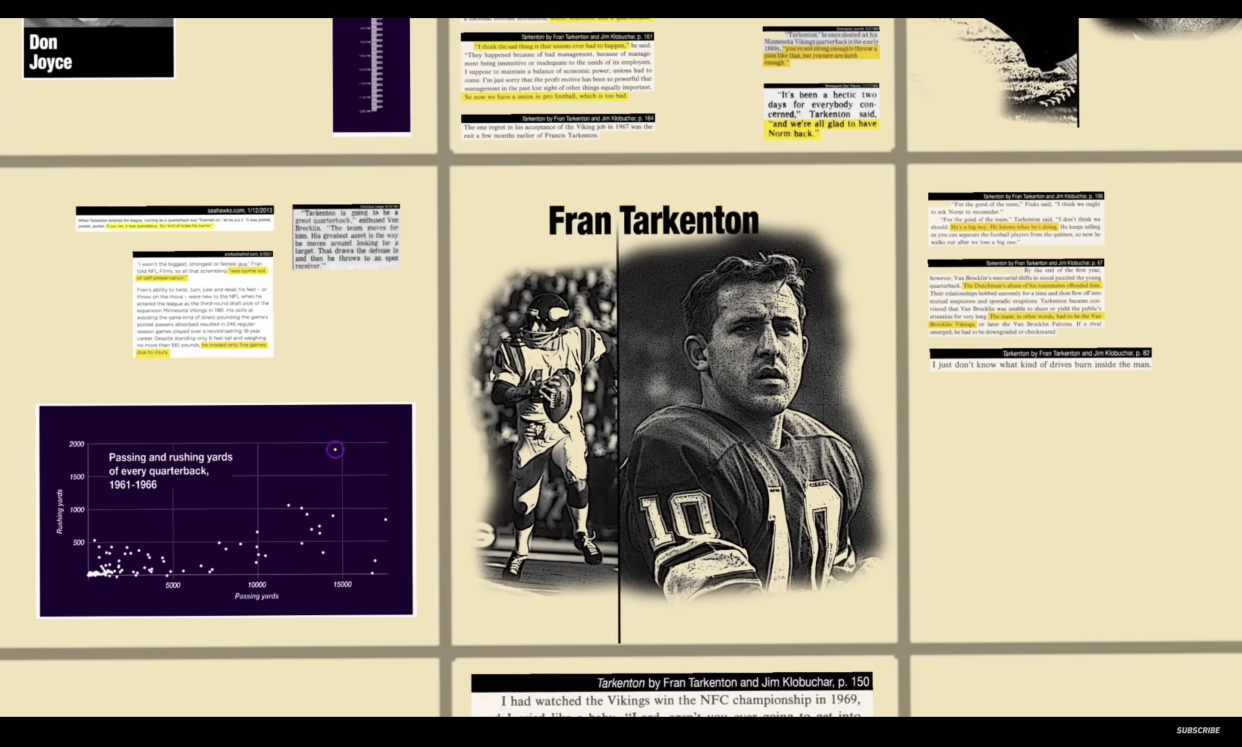
- Oops!Something went wrong.Please try again later.
- Oops!Something went wrong.Please try again later.
There’s a moment about 30 minutes into the first episode of Secret Base’s latest sports documentary series, “The History of the Minnesota Vikings,” where director and co-narrator Jon Bois needs to describe something incredibly stupid. The episode is called “56 Pounds of Beer” but the drunken antic that Bois ranks as even wilder than its titular feat is that of Vikings lineman Steve Stonebreaker, who once ordered a 3-foot tall novelty glass to be filled to the brim with a giant martini (“reportedly throwing in dozens of olives”); he got so drunk that he fell asleep at the base of an escalator which dutifully carried the unconscious Stonebreaker up a flight.
Bois visually captures this piece of team lore as he does all Vikings tragedies, triumphs, cultural currents, players, coaches, and every other team in the NFL: through basic animation, charts, graphs, and images of newspaper clippings, all of which live on a graph-plane version of Google Earth that is mostly void, partially stars.
More from IndieWire
Byron Allen Makes a $10 Billion Bid for ABC and Disney's Other TV Networks
'El Conde' Gave Birth to a New Camera and an Ongoing Pablo Larraín-Ed Lachman Collaboration
Rendering football, that most corporate-packaged of American sports, without any of its usual bombastic orchestral intro music or heroic quarterback tropes, allows Bois to emphasize the weirdness, wonder, folly, and humanity in his subjects. It’s something that Secret Base, an evolution of SB Nation’s YouTube channel into a number of shows that explore the limits of sports documentaries including “Beef History,” “Weird Rules” and Bois’ own “Dorktown” project, has been doing for years now. Bois doesn’t have to give Stonebreaker’s stunt the dignity of more than a few basic polygons with a lot of Z-fighting (a phenomenon that can make CG objects look jittery or flickering). “It looks incredibly cheap, which is a joke I think we play into,” Bois told IndieWire’s Filmmaker Toolkit podcast. “And I think people are kind of along for the ride.”
However, he uses the same visual language to capture all aspects of the Vikings’ history; seeing the team’s quest for a championship rendered as a purple bar that stretches into the thermosphere contains more pathos in an image than any talking head or game footage could articulate. And the deliberately constrained look of Bois’ work pushes Google Earth to the limits of its functionality.
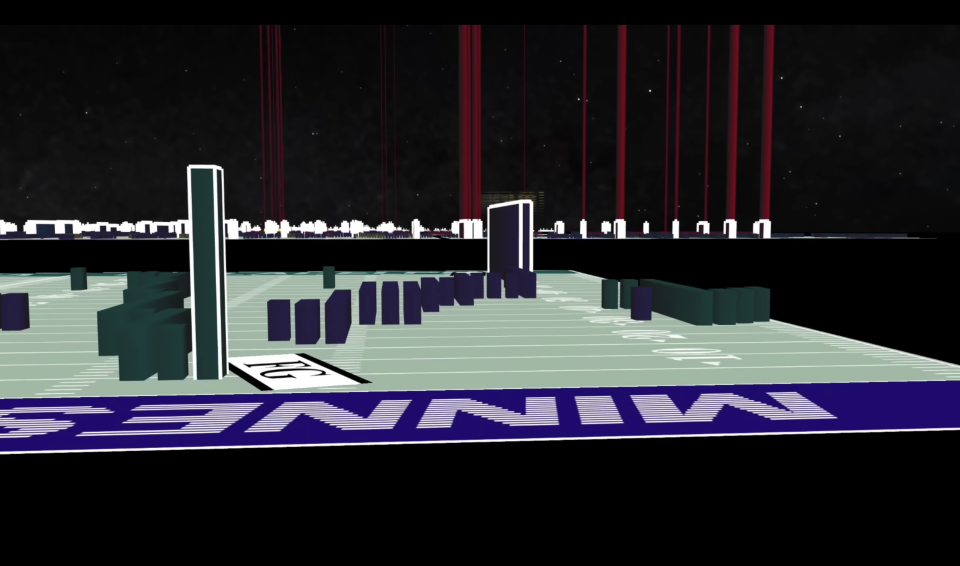
“I turn off all the terrain layers, make it completely flat, get a PNG file that’s solid black, 100 by 100 pixels, and stretch it out over the entire planet, and then all of a sudden we’ve got this blank canvas, and on that canvas the software lets you drop image files, build polygons, and turn those polygons into more sophisticated polygons,” Bois said.
The lessons he’s learned in doing this, for everything from franchise histories of the Atlanta Falcons and Seattle Mariners to the rise of MMA fighting and the deeds of players named Bob across all modern sports, has given Bois and Rubenstein a keen sense of how to imbue all those polygons with emotion. Bois sets up basic patterns of color, height, depth, and width and then edits additions, subtractions, and camera movements with razor precision. The Vikings series is an ambitious step up for “Dorktown” both in its length (the series clocks in closer to nine hours in total than the seven Bois expected it would take) and how Bois plays with the show’s main “boss” chart: a graph of the Vikings’ cumulative regular season win differential in the Super Bowl era.
“We want to make our charts as big and loud and weird as possible while also conveying the information that we want them to convey and not leaving anybody out,” Bois said. “We actually built [the hero chart] first, before we ever started writing anything, before we even finished outlining the project, because we knew our central theme was going to be illustrating the Vikings as a team that has this eternal, endless, mountainous weight toward a Super Bowl, but has just never gotten there. That theme was the one thing we knew for sure, and we were like, ‘OK, so what is the chart that is going to convey that in the most simple way, and the one that won’t come back to bite us six months from now if we find some other theme?’”
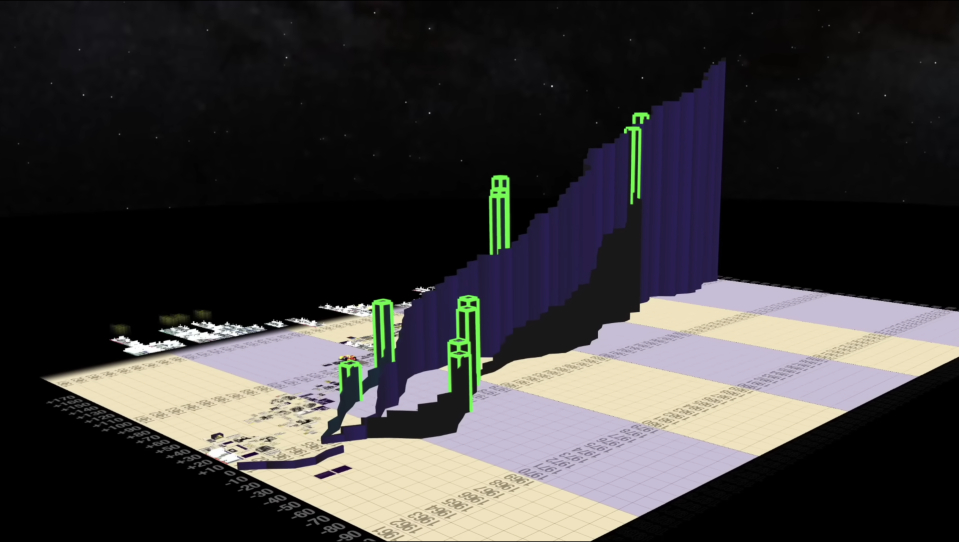
Once Bois and Rubenstein built the main chart that acts kind of like a Christmas tree on which they hang all other Vikings games, stats, graphs, images, and news quotes from the series’ subjects, Bois brought it into a non-linear editing program to time how everything unfolds and pair the visuals with voiceover. In the past, Bois stuck to the most lo-fi option possible, editing feature-length docs on iMovie. But for “The History of the Minnesota Vikings,” he finally broke down and used Final Cut Pro.
“I feel like one thing Alex Rubenstein and I are always trying to search for is how to tell stories through charts in ways that are more interesting and more, I guess, discernible,” Bois said. “I am kicking myself for not having [upgraded to Final Cut Pro] years sooner. My life became a lot simpler from a technical end.”
Even with the technical streamlining, Bois and Rubenstein’s choice of minimal visual presentation, wild ‘70s and ‘80s synth score, and lack of interview footage all extract football from its normal packaging, according to Bois. It sends a very clear signal that “The History of the Minnesota Vikings” is looking at its subject from a distinctly universal point of view.
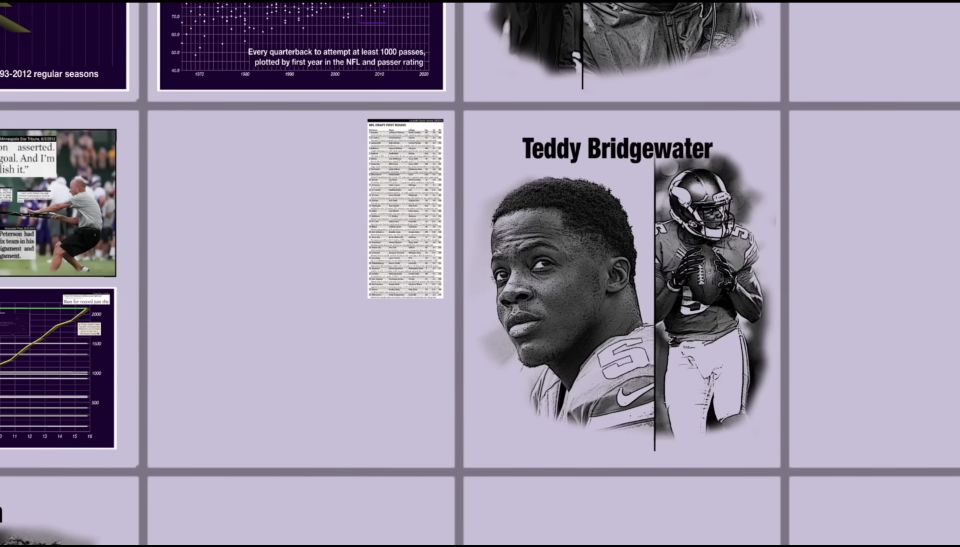
“Traditionally there is a huge chunk of humanity, at least in America, who did not get the invite. They’re more or less implicitly told, ‘No, this is not for you. The NFL, baseball, the NBA: This is not meant for you.’ And so we want to speak to those people and be like, ‘No, we are making this for you.’ We’re making this for the typical dude who wears a jersey to the stadium every Sunday, for sure. But we’re also talking to you. We’re talking to everyone. There’s nobody we’re not talking to, unless we bore you,’” Bois said.
That broader audience view frees Bois and Rubenstein from “sticking to sports” and stretches the format of the documentary itself. In places, it bleeds into personal essay or cultural commentary, (correctly) awards Super Bowl XLI to Prince, and Bois and Rubenstein, assisted by rights specialist Lindley Sico, have to make a fair use case for every piece of game footage they use. That makes seeing football itself a special moment in the flow of each episode of the series, and very much by design.
“If I want to talk about Randy Moss, I can’t just ambiently say some stuff I think about Randy Moss while showing random clips of him doing Randy Moss stuff. I’ve got to speak to the footage specifically,” Bois said. “I became a better writer. There’s got to be intent here. So frankly, I love working within those confines.”
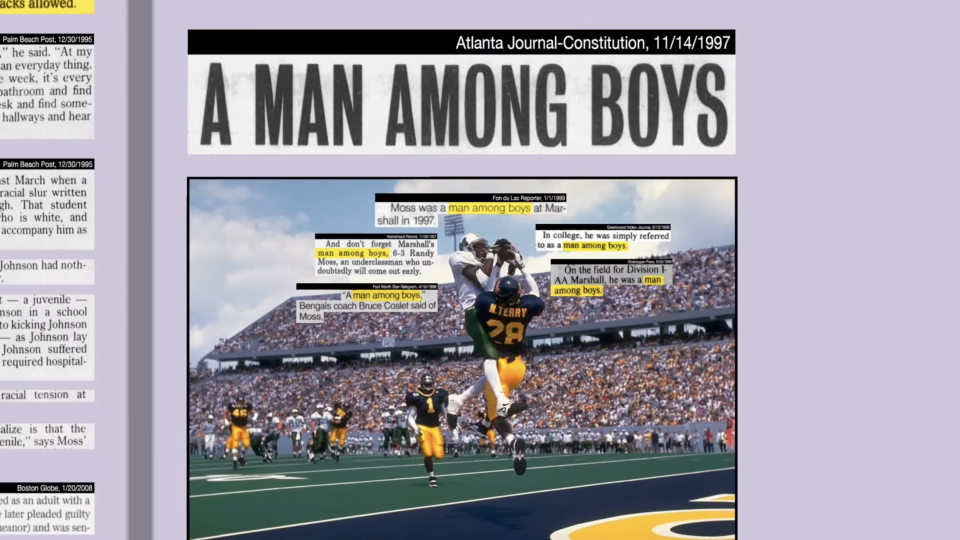
As Bois continues to work within them, he’s found the opportunity to stretch the confines of his documentary world. One of his favorite and most rewarding moments in the series is Bois getting the chance to tell the story of the 1998 NFC Championship game between the Vikings and the Falcons, which he and Rubenstein of course covered from the opposite angle in their Falcons series.
“[It was] almost like a Beowulf/Grendel kind of thing,” Bois said. “We used the same music cue that’s always been kind of distressing and haunting, the callback to the Falcon [chart], and then for the first time, we go long on the specifics of the coaching decision and the clock management [of that game]. We set it to this eight-minute long, freeform jazz track that I had been sitting on for like four years.”
The music, the dueling team charts, and the slow, ramping dread of very simple pixels are all a perfect encapsulation of the work that Bois and his team at Secret Base do: tell great human stories using jokes, the world itself, a little bit of math, and a deep appreciation of myth. “It’s really the only way we know how to do this thing,” Bois said.
The Filmmaker Toolkit podcast is available on Apple Podcasts, Spotify, Overcast, and Stitcher. The music used in this podcast is from the “Marina Abramovic: The Artist Is Present” score, courtesy of composer Nathan Halpern.
Best of IndieWire
Where to Watch This Week's New Movies, from 'Dumb Money' to 'Cassandro'
The Best True Crime Streaming Now, from 'Unsolved Mysteries' to 'McMillions' to 'The Staircase'
Martin Scorsese's Favorite Movies: 70 Films the Director Wants You to See
Sign up for Indiewire's Newsletter. For the latest news, follow us on Facebook, Twitter, and Instagram.

